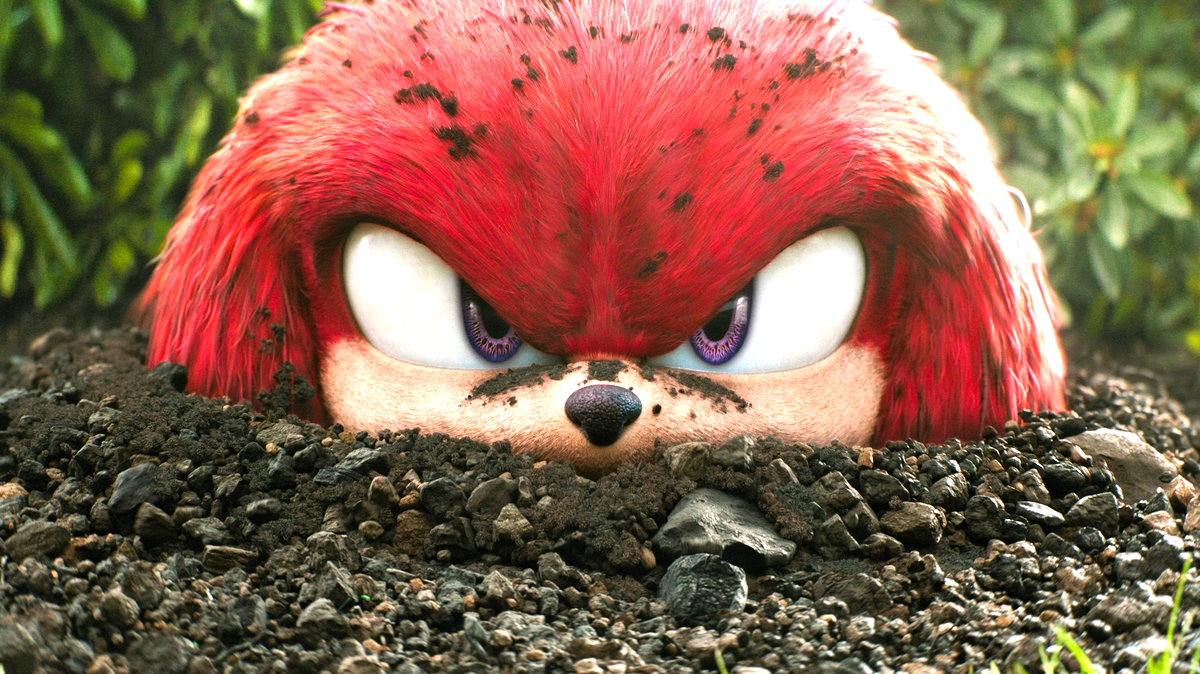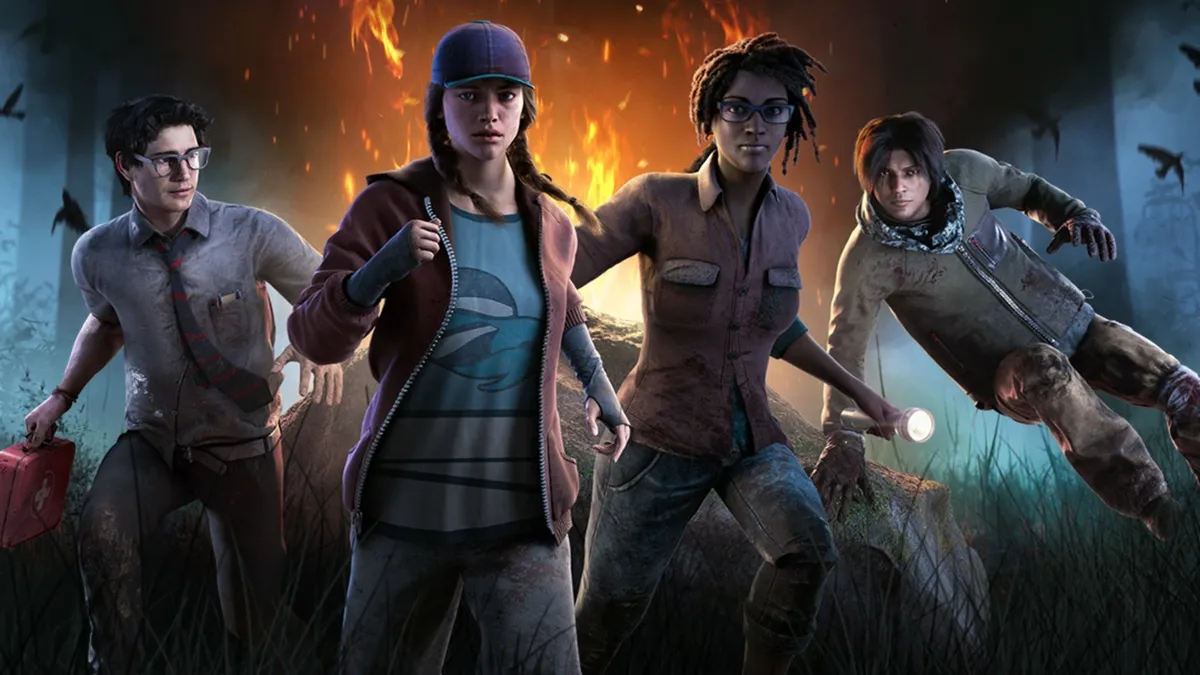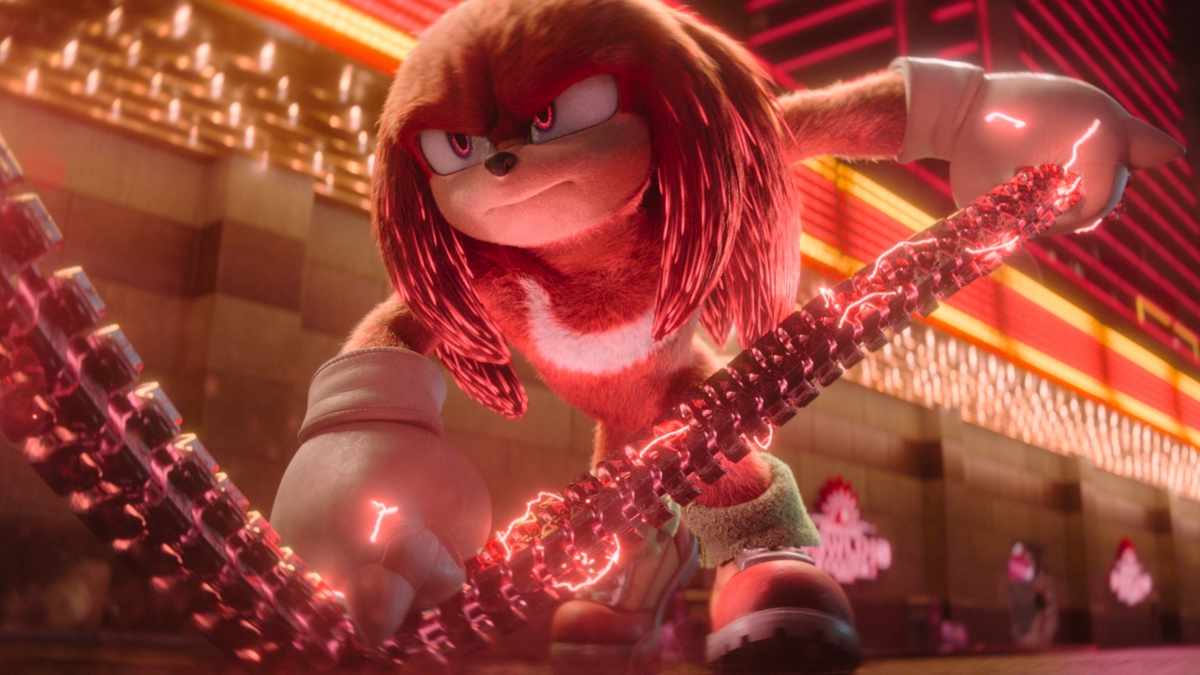With a 20-year history of games, Halo is one of the most beloved first-person shooter franchises in video game history. The series first began with Halo: Combat Evolved on the original Xbox in 2001, and quickly became a runaway hit with its follow-up titles Halo 2 and Halo 3. All three games revolutionized first-person shooters on consoles, paving the way for their widespread popularity across today’s PlayStation 5 and Xbox Series X/S.
With Halo Infinite set to come out later this year, it’s time to take a look back on this classic series and rank the games from worst to best. Read on for our thoughts.
Halo 5: Guardians

Halo 5: Guardians is the black sheep of the Halo franchise, in large part because it puts players in the shoes of Spartan Locke for the majority of its campaign. This odd narrative choice by developer 343 Industries frustrated fans, not only because it took the focus away from the hero they played as in the four mainline Halo titles, but also because Locke’s mission is to hunt down and stop Master Chief. Who wants to play as the guy trying to stop the hero?
While Locke should be celebrated as the first Black protagonist in a Halo game, 343i’s writing ultimately holds back his potential. Locke has very little character development throughout the game, and he seems to blindly accept orders from the UNSC without question. Locke is hamstrung by the game’s ill-conceived story, which is a loss for every Halo fan.
Halo 5’s problems don’t end with its narrative. In an attempt to modernize the game and keep up with other major shooter franchises like Call of Duty and Titanfall, 343i gave characters the ability to hover, dash, clamor, and ground pound, among other new additions. Unfortunately, somewhere in the process of adding all of these new features, Halo 5 lost what sets it apart from other shooters: Its rhythmic flow in skill-based combat.
To add insult to injury, the game also introduced microtransactions to Halo’s multiplayer for the first time, allowing players to essentially buy their way to randomized unlocks, cheapening the progression system of Halo’s past.
Halo 4

After Bungie parted ways with Microsoft to begin developing Destiny, Xbox Game Studios’ 343i took on development for the main Halo games. Unfortunately, Halo 4 falls short of Bungie’s games, but it still delivers a heartfelt story about Cortana and Master Chief that carried a lot of emotional resonance with longtime fans.
While Halo 5 ultimately strayed too far from the franchise’s roots, the new additions to Halo 4 aren’t as egregious. While the Forerunner enemies and weapons do shift some levels from the rhythmic combat that defines Halo to Call of Duty’s peek-and-shoot style combat, Halo 4’s campaign remains an overall great experience and makes for a solid entry in the Halo canon. The core gameplay and DNA of the franchise that fans loved about previous games remains largely intact, even with the new developer at the wheel.
The multiplayer isn’t anything to sneeze at either, featuring a mix of classic and new maps as well as a suite of new weapons and vehicles to try against your friends.
The most forgettable aspect of Halo 4 is the Spartan Ops mode, which replaces the Firefight mode of previous games. 343i originally released Spartan Ops over the course of several weeks, in a similar format to a TV series. While the cooperative missions are a fine distraction to play through, they don’t offer much in the way of replayability, and the narrative isn’t nearly as interesting as that of the main campaign.
Halo 3: ODST

The biggest problem with Halo 3: ODST is that there isn’t more of it.
ODST was sold as an entirely separate game from Halo 3, but effectively acts as an expansion to the 2007 classic. The game takes some cues from the original Halo, with players no longer able to dual wield or rely on the shield of Master Chief’s Spartan armor for protection. Additionally, there’s a new night vision function, the scoped pistol from the original Halo makes its glorious return, and players take fall damage once again.
The campaign puts players in the shoes of a rookie orbital shock drop trooper, who is far squishier than Master Chief. Enemies feel more intimidating in ODST, and the combat is more dangerous than ever before. Halo 3: ODST was the first and only Halo to date to offer a more open-ended campaign where players can choose what order they want to tackle mission objectives. The story structure contains plenty of slower-paced moments for exploration that give way to bombastic firefights and set pieces later on. Combined, these features provide a fantastic campaign experience that’s just a couple hours too short.
Thankfully, the advent of the new cooperative Firefight mode fills in the gap, with a quintessentially Halo take on survival modes like Gears of War’s Horde Mode or Call of Duty’s Zombies mode. This lets players enjoy ODST for several more hours, even after the credits roll on the campaign. If that’s not enough, ODST includes all of the previous maps from Halo 3 in addition to a few new ones to throw into the mix.
Halo: Reach

Halo: Reach is the final game in the series from Bungie, and it makes for a great sendoff by the original Halo developer.
Reach is a prequel to the original Halo trilogy and takes place on one of humanity’s last strongholds in their war against the Covenant. Players take on the role of Noble 6, a member of the Spartan Noble Squad as they hold the line. Fans of Halo’s expanded lore know the Battle of Reach ends in tragedy, and the story plays out similarly to Star Wars: Rogue One: Valiant heroes make a final stand in a battle they know can’t be won.
Halo: Reach’s campaign has some of the best set pieces in, the entire franchise, and it does an excellent job conveying the scale of the conflict on Reach. Building on a decade of Halo games before it, Reach’s campaign feels like a culmination of Halo’s growth over time, with Bungie picking and choosing some of the best elements from previous entries and throwing some new elements into the mix as well.
Halo: Reach’s multiplayer suite is also top-notch, with some terrific maps and modes, as well as a fun progression system that gives players a chance to customize their Spartan armor like never before. The expanded and improved Firefight mode, and the vastly refined Forge mode, make for a multiplayer package that remains one of the best of the Xbox 360 era.
Halo: Combat Evolved

Halo: Combat Evolved is the definition of a system seller, and Xbox wouldn’t be a household name today without it. With its stunning graphics and excellent story, Halo’s unique visual style and rhythmic first-person combat changed shooters forever. To this day, the experience of stepping out of your escape pod and seeing Halo’s terrain sprawl before you remains a high watermark in gaming history.
The original Halo also marked a major step forward for multiplayer on console gaming platforms. It’s hard to overstate the pure joy that ensued from inviting your friends to bring their Xbox’s over for a LAN party and hosting 16-player deathmatches on classic maps like Blood Gulch and Sidewinder. The only major drawback stemmed from a lack of true online multiplayer on launch, as the game debuted a year before Xbox Live. But the issue was short-lived, and Halo quickly came to define the original Xbox as a powerhouse for online multiplayer.
Today, players can now enjoy Combat Evolved’s multiplayer online in The Master Chief Collection.
Halo 3

Halo 3 brought the story threads of the original Halo trilogy to a satisfying (albeit open-ended) conclusion and once again gave gamers a reason to fork out the cash for a new generation of Xbox’s.
Although Halo 3 falls just short of the top spot in our ranking, that’s no mark against it, as the game is packed with an excellent campaign that allows four-player co-operative play for the first time in Halo history. The multiplayer is similarly top-notch, featuring a roster of maps both classic and new, as well as a wonderfully balanced arsenal of weapons and power-ups to sink your teeth into.
The advent of Forge and Theater modes also fill out a multiplayer offering unmatched by any other game on Xbox 360 at the time. These features brought Halo’s much-loved custom games to an entirely new level. Since then, some of the fan-made game modes, like “Duck Hunt” and “Cops and Robbers,” have kept players coming back to this classic for the last 14 years.
One small annoyance pervades Halo 3’s singleplayer, however: When Cortana and The Grave Mind communicate with the player, dialogue forces Master Chief to move slowly as his companions relay their messages. This tends to interrupt each level’s flow while adding little in the way of storytelling. But these segments are short enough that it’s easy enough to look past them and keep pushing to the next exciting encounter.
Halo 2

Halo 2 and Halo 3 are both so fantastic that it’s difficult to place one over the other. But the second game in the trilogy holds a special place in the hearts of many fans and remains the standard to which all other Halo games are held, making it We Got This Covered’s top Halo game.
The jump in quality between Halo: Combat Evolved and Halo 2 is perhaps the most notable between any two entries in the series. The story has several more layers and a much larger cast of characters than the previous game, introducing Lord Hood, Miranda Keyes, the prophets of the Covenant, The Grave Mind, and The Arbiter. Players alternate between Master Chief and The Arbiter throughout the campaign, and the narrative breathes new life into the Halo universe. Even the visuals are a major step up from Combat Evolved, and few games on the original Xbox were able to come close.
By the time Bungie released Halo 2, Xbox Live was a household name. Many players experienced true online Halo multiplayer for the first time ever through Halo 2, showing just what kind of experiences were possible on consoles. Without it, first-person shooters may look very different across Xbox and PlayStation alike.






